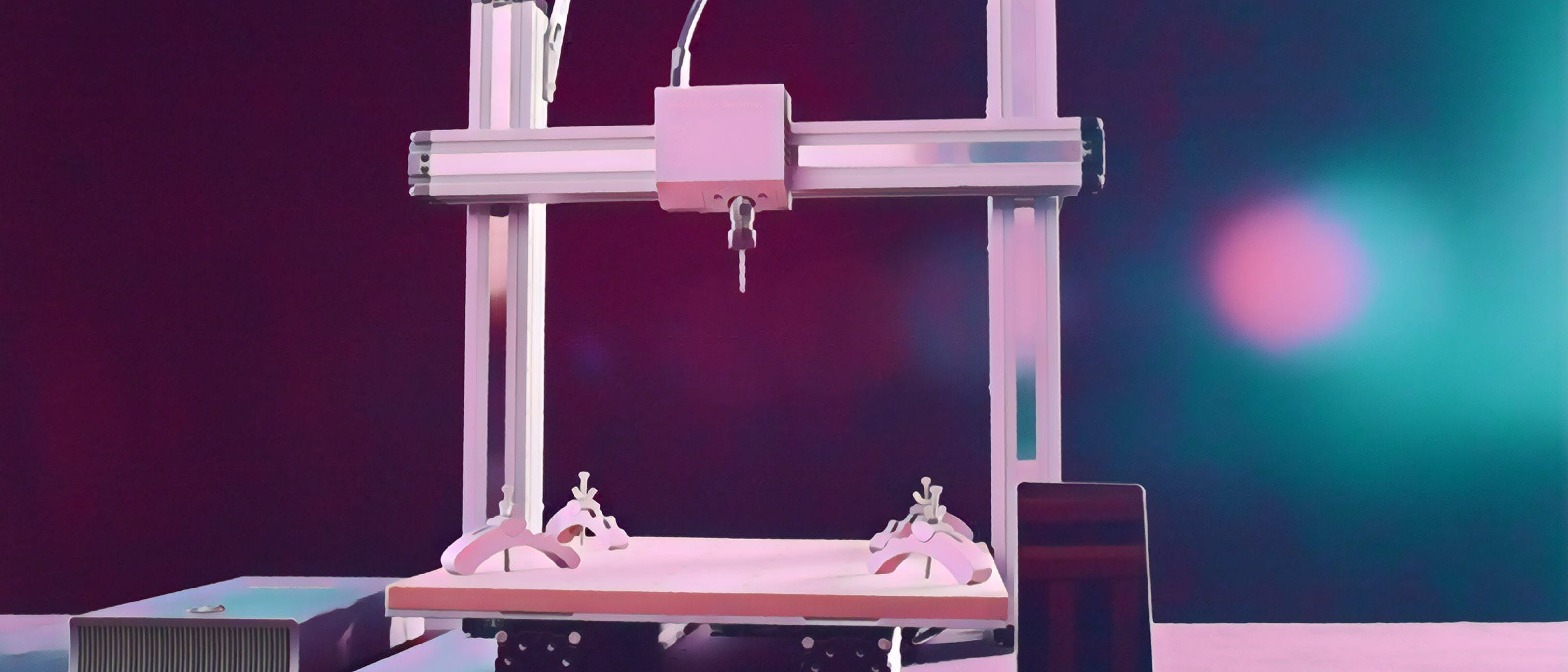We didn’t see our Kickstarter campaign reach its $100,000 goal—it happened too fast. From what we could tell, the page briefly crashed from the flurry of backers. It was midnight here in Shenzhen, and we were eagerly watching the visitor data in Google Analytics. Within minutes—seven, to be exact—we had blown past $1 million, setting a new Kickstarter record. As we’re writing this, we’re well past $4 million, and getting back to building the 2.0 version of the three-in-one 3D printer, CNC, and laser cutter that won us this devoted fan base.
Keeping promises before adding features
This isn’t our first success. Our original model also reached its funding goal in just a few minutes back in 2017. Our standout innovation then was quality all-metal construction that combines three essential maker tools. As impressive as that was, our backers still asked if we could add more features as our funding ballooned beyond our initial ask. Many crowdfunding projects do this, but we decided modification at that stage would introduce too many variables that might impact product stability and quality.
So we listened to the community as much as we could but mitigated the risks of feature creep. We made some small improvements—like making a stronger laser head, adding an enclosure and door opening switch for safety, and releasing a longer Z module for tall models—but forced ourselves to wait before making major upgrades.
Building a community that teaches each other—and us—about the product
We made a point of investing in our community between upgrades, too. 3D printing, laser cutting, and CNC routing all have quite a learning curve, and building an active community can both support education and generate informative real-world feedback. We connected over 10,000 backers via a Facebook group and forum for users to chat and share and a knowledge base with a quick start guide, troubleshooting tips, and FAQs. These backers responded to each other’s questions within the hour, showcased work they were making, and developed friendships. We also started hosting makerthons to help people see all that’s possible with the Snapmaker. Without building a community like this, we wouldn’t know what our 2.0 model really needed or how to get backers excited about it.

By holding off on iterative improvements, we made space for bigger thinking
After we shipped out all of our original Snapmakers, we could get back to building. We stepped back, reevaluated the product from the ground up, and considered some more groundbreaking improvements. Many makers run on continuous iteration; we think we were able to think more innovatively—and get our loyal fan base more excited—because we forced ourselves to start on the 2.0 model with a fresh perspective.
One of our biggest goals, seeing how our community custom-outfitted accessories from dust-proof covers to rotary tools to cameras to monitor printing progress, was to make the whole thing more modular and more adaptable to backers’ varied needs. We started prototyping in a wider range of sizes, added sensors and a built-in camera to make it smarter, and made a more powerful CNC spindle. We wanted to push modularity to the next level, giving creators flexibility for now, but also for later, as new technology becomes available.
Adopting CAN (Controlled Area Network) bus expansion was one of the most significant ways we were able to do that. It’s a technology, often used for automating vehicles and industrial robots, that allows microcontrollers to ping information to each other in applications without complicated wiring connecting each one. New features can be added with software alone. It’s known for being a robust, efficient, and flexible technology. As far as we know, no other 3D printer is using it.
Using the CAN bus protocol, the controller is able to connect all modules and add-ons in the Snapmaker 2.0 system. Each module and add-on contains a chip for receiving and responding to all transmitted messages. Rather than a bigger control board with tangled cables, we've upgraded to universal ports, multiport adapters, and a CAN hub for adding additional CAN bus ports. This allows for easy modification and will let us add more ports and controls in the future. It even lets us include our backers in developing new features, which has caught the attention of many professional KOL (Key Opinion Leader) users who amplify the project to their followers.
Balancing adaptability and affordability
Cost was a huge restriction for this product. Most DIY 3D printer manufacturers try to make cost their competitive advantage, but our configuration meant Snapmaker 2.0’s cost would have to go up. By changing the communication mechanism, we added a dozen chips into each module. The built-in camera on the laser head, new sensor, and smart touch screen aren’t free either. It was very scary to make the first version of our Bill of Materials (BOM) list for manufacturing. Very scary. These improvements pushed our price to the level of Ultimaker and Formlabs.
We carefully reviewed the entire BOM list, spent months reviewing our optimization list, and refined the design. Eventually we landed on the version we’re launching now, with early bird prices that started at around $600 for the smallest model and go up to $1,000 on Kickstarter, but which we will later need to sell for more like $1,200 to $1,800. We’re feeling good about where the product is now, and we’re looking forward to sharing it with our ever-expanding community.
Snapmaker is live on Kickstarter through June 6, 2019.
